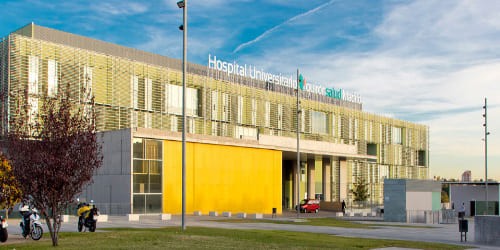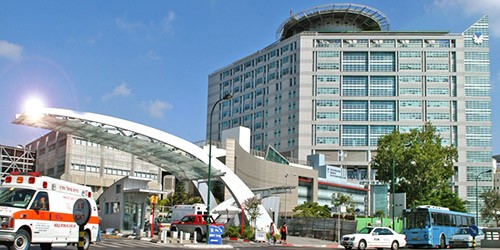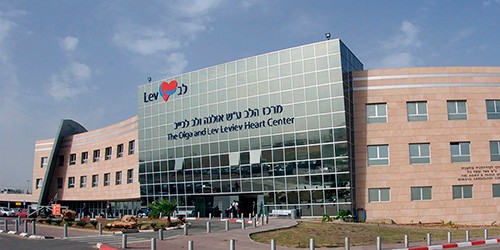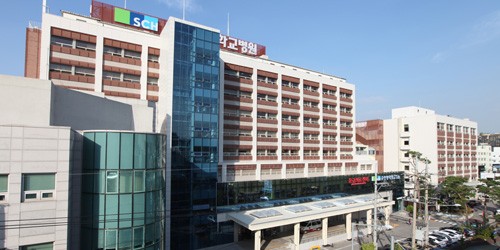Multiple myeloma is a cancer of the blood cells that are responsible for the production of antibodies. This pathology is also called myeloma and plasma cell myeloma. According to the latest data from the American Society of Clinical Oncology (ASCO), about 176,404 new cases were diagnosed worldwide in 2020. Men get the disease more often. Myeloma is extremely rare before the age of 40. Most cases occur over the age of 60. The effectiveness of treatment depends on the stage and methods of therapy. Abroad, patients with myeloma are treated comprehensively and an individual therapy plan is selected. Doctors resort to chemotherapy, radiation, and stem cell transplantation. New advances are also actively used, such as targeted therapy and immunotherapy, which help patients even at the last stage of the disease. Read our article to learn about the effective methods of treating plasma cell myeloma.
What is multiple myeloma?
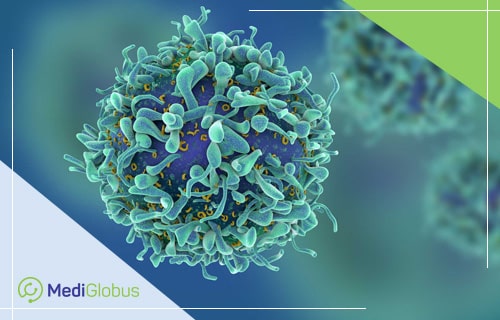
Multiple Myeloma Research Foundation describes it as a type of blood cancer that affects plasma cells. The disease causes malignant cells (M-proteins) to build up in the bone marrow. They crowd out normal cells that fight infections. This leads to the development of anaemia, excessive bleeding and a decrease in the body’s ability to fight infection.
The accumulation of M-protein in the blood and urine causes damage to the kidneys and other organs. Most myeloma patients have osteolytic lesions – bone destruction that increases the risks of bone fracture.
HOW MUCH DOES IT COST TO TREAT MYELOMA DISEASE ABROAD?
If you are planning to undergo treatment for myeloma disease abroad, our coordinating doctors can help you. We can tell you which clinic to go to to get a good doctor and how much the treatment will cost. Click the button below and fill out the form. We will call you back within a few hours.
Stages of myeloma disease
Stage 0 – asymptomatic myeloma | This type of cancer develops slowly. It is characterised by an increase in the number of plasma cells in the bone marrow and the presence of monoclonal proteins in the blood. The disease is asymptomatic. |
Stage 1 | At this stage, there is a small number of myeloma cells and a slight decrease in haemoglobin. There is no bone damage. Patients experience generalised weakness. Characteristic symptoms of the disease are not yet present. |
Stage 2 | This is an intermediate stage. There is an increase in M-protein in the patient’s blood. There is pain in the bones, especially in the spine, thorax, pelvis and ribs. Pathological bone fractures and paralysis may occur. The body’s resistance to infections is reduced. |
Stage 3 | In this stage, the number of myeloma cells is high. The patient often suffers from infectious diseases and loses weight. He or she is at high risk of pathological fractures. |
At the time of diagnosis of myeloma disease, more than 90% of patients have multiple foci of damage. The symptoms of the disease depend on which organs are affected. Frequent signs of the disease include:
heart and kidney failure;
intestinal disorders;
joint deformation;
dizziness and nausea;
mental disturbances;
enlargement and thickening of the tongue (macroglossia).
Diagnosis of myeloma disease

Multiple myeloma is difficult to diagnose. Several different tests may be required to detect the disease. Examinations to diagnose multiple myeloma include:
biopsy;
CT, PET-CT, and MRI scans;/p>
laboratory tests.
Methods that are used to detect oncopathology and monitor the treatment process:
Multiple probe array (MUGA) scan and 2D echocardiogram are used to assess and monitor changes in heart function that occur as a side effect of chemotherapy.
Multiple myeloma flow cytometry test shows information about whether cancer cells contain normal or abnormal amounts of DNA. It displays the rate of tumour growth.
GET A SECOND OPINION
A second opinion is an opportunity to verify the correctness of a diagnosis and receive a refined treatment according to modern protocols. MediGlobus coordinators can help you consult with leading experts in the treatment of multiple myeloma. To book a consultation, click on the button below and leave your contact details.
Treatment options for myeloma disease
The American Society of Clinical Oncology recommends a comprehensive approach to the treatment of multiple myeloma, and a team of specialists from different medical disciplines should be involved in the therapy process. The goal of therapy is to destroy abnormal cells, control their growth, alleviate the symptoms and improve quality of life. Although no drug completely cures multiple myeloma yet, many patients have successfully controlled their disease for many years with modern therapies.
Treatment can be intensive or non-intensive and depends on the stage of the disease, the general condition and the age of the patient. The main treatments for multiple myeloma include chemotherapy, drug therapy, radiation, and stem cell transplantation. In addition to these methods, depending on the individual characteristics of the patient, other options such as targeted therapy, immune therapy, blood transfusion, surgical treatment, etc. may be applicable. Doctors and scientists are actively searching for new methods and drugs to fight multiple myeloma more effectively.

Chemotherapy for multiple myeloma
Chemotherapy for multiple myeloma involves using one or more drugs at the same time. Because each drug destroys tumour cells differently, using multiple drugs together makes the cancer cells more susceptible to treatment. For patients with multiple myeloma, chemotherapy is given orally or intravenously.

Many patients with multiple myeloma receive chemotherapy in combination with other treatments. A sample treatment plan for myeloma:
induction chemotherapy – a combination of drugs used to kill as many myeloma cells as possible;
consolidation chemotherapy – using high doses of chemotherapy to kill the remaining myeloma cells followed by stem cell transplantation;/p>
maintenance therapy – a less intensive course of chemotherapy to reduce the risk of recurrence.
Radiation therapy for myeloma disease
Radiation therapy for multiple myeloma is indicated to treat a specific area where the bone is damaged and myeloma cells are causing pain. It is often given to prepare for a stem cell transplant. This allows as many myeloma foci as possible to be destroyed.
Stem cell transplantation in myeloma
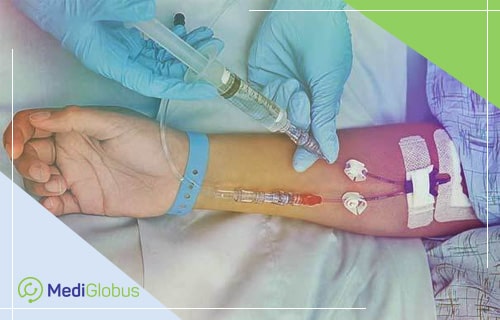
Stem cell transplantation is used to stimulate the growth of new bone marrow and restore the immune system. Candidates for bone marrow transplant are patients with advanced-stage multiple myeloma who are younger than 70 years of age.
Before transplantation, the patient receives high doses of chemotherapy. Radiation therapy is used if necessary. Stem cells are injected intravenously. The procedure takes about an hour. After entering the bloodstream, the stem cells move to the bone marrow and produce new cells.
Stem cell transplantation (SCT) can be autologous or allogeneic. If a patient receives an allogeneic (donor) stem cell transplant, certain medications are given to reduce the risk of rejection. For several months after transplantation, the patient’s condition is constantly monitored. If necessary, blood components (platelets, red blood cells) are transfused.
New therapies for multiple myeloma
Modern research in the field of multiple myeloma is aimed at increasing knowledge of the disease, its more effective treatment and the development of new methods of fighting the pathology. One of the key areas of research is the search for drugs and drug combinations that can fight the tumour more successfully. Other important areas of research include studying the genetic features of myeloma, developing individualised treatment approaches based on patients’ genomic data, immunotherapy research and searching for new markers that can be used to create targeted therapy drugs.
Targeted therapy
Targeted therapy is an innovative approach to treating myeloma cancer. It targets specific genes, proteins or the environment that promotes the growth and survival of cancer cells. This method blocks the development and spread of the tumour, minimising damage to healthy tissue. In recent years, targeted therapy has become an effective tool in the fight against multiple myeloma, improving the prognosis of the disease.
Each form of myeloma has unique characteristics. Analysis of cancer cells helps identify specific genes, proteins and other factors, allowing treatment to be personalised for each patient. Research also focuses on identifying new molecular targets and developing therapies that target these targets, further improving targeted therapies to fight the disease.
Immunotherapy
Immunotherapy mobilises the body’s defences to fight cancer by improving the immune system’s ability to attack cancer cells. One actively developing method is CAR-T therapy. It targets a special protein found on the surface of myeloma cells. This treatment is particularly effective for multiple myeloma that is uncontrolled after 4 or more treatment courses.
In the case of CAR T-cell therapy, T cells (white blood cells, white blood cells) are extracted from the patient’s blood. They are then modified specially so that they can recognise cancer cells by identifying the BCMA protein on their surface. The modified T cells are then returned to the patient’s body. Once there, they find and destroy the cancer cells. This helps to reduce the number of abnormal cells and improves the prognosis.
ADVANCED MULTIPLE MYELOMA CLINICS
MediGlobus coordinating physicians will advise you on which clinics to apply to for low-cost advanced multiple myeloma treatment. To submit your request, click on the button below and fill out the form.
Palliative care for myeloma disease
Multiple myeloma is the second most common haematological malignancy after non-Hodgkin’s lymphoma. In Europe, more than 20,000 people die from this disease each year.
Supportive care is an integral part of therapy for patients with myeloma. It is aimed at improving the quality of life of patients and increasing its duration.
Many foreign clinics have palliative care teams. They consist of doctors, nurses, social workers, psychologists and other specialists.
Palliative care for myeloma can be required at any time. It is most often needed in the final stages of the disease. Patients with multiple myeloma have many complications:

bone pain;
fractures;
infections;
kidney disease;
cardiological pathologies;
psychiatric disorders.
Myeloma supportive therapy includes the use of all modern methods of fighting cancer. An individual therapy programme is selected for each patient abroad. This improves the patient’s general condition and enables him or her to live a full life without pain.
Prognosis of myeloma treatment
“I have seen patients who have lived from a few weeks to more than 20 years after diagnosis.” – Jens Hillengass, MD, professor of oncology and internal medicine from the US.
According to the Canadian Cancer Society, prognosis and survival rates for multiple myeloma depend on a variety of factors. Not only the patient’s medical history, type, stage and characteristics of the cancer are taken into account, but also the treatments chosen and response to them.
Several prognostic factors affect the prognosis for multiple myeloma:
Staging | Patients with early-stage cancer have a more successful response to treatment and better survival rates. |
Age | Younger patients have a higher chance of a favourable outcome than older patients. |
Results of blood tests | Beta-2-microglobulin, albumin, lactate dehydrogenase and creatinine levels play a crucial role in determining prognosis. High beta-2-microglobulin and lactate dehydrogenase levels, as well as low albumin levels, may predict a less favourable prognosis. |
Renal function | Worsening kidney function, as measured by blood creatinine levels, is often associated with a less favourable prognosis. Some treatments, such as dialysis, can help improve kidney function and therefore prognosis. |
Response to treatment | An effective response to treatment, especially achieving remission (no evidence of disease), is associated with a better prognosis. Patients whose tumours respond successfully to initial therapy have longer periods without recurrence and better chances of survival. |
Multiple myeloma is an incurable disease. The life expectancy of patients depends on the stage of the disease. According to the latest information provided by the National Library of Medicine, the survival rate of people with myeloma at different stages is as follows: in stage one, the 5-year overall survival rate is about 82% and 55% without disease progression. In stage two, these numbers drop to 62% and 36% respectively, and in stage three – to 40% and 24%.
With stage 3 multiple myeloma, how long do patients live?
This question is answered by doctors from the American Cancer Society. If myeloma disease is diagnosed at stage 1, the life expectancy of patients is about 62 months (5 years). With the second stage of oncopathology, people live more than 44 months, and with stage 3 – about 29 months. However, it should be noted that these indicators are averaged and do not reflect the individual characteristics of each patient. With the right therapy and the use of modern treatment methods, patients’ life expectancy can be significantly increased, allowing them to live for many years. Learn more about multiple myeloma treatment from a MediGlobus specialist.
Where is multiple myeloma treated abroad?
Prof. Mehmet Hilmi Doğu
One of the leading oncohaematologists at Liv Ulus Clinic. His area of expertise includes consultation and treatment of blood disorders including lymphoma, leukaemia and multiple myeloma. He is known as a very experienced specialist, with extensive practical experience and in-depth knowledge of haematology. This physician is actively involved in the research and implementation of new treatments for blood cancers. His activities also include training and advising colleagues and participating in scientific events to keep abreast of the latest trends and advanced techniques in the field of haematology and oncology. Mehmet Hilmi Doğu is a board member of the Turkish Haematology Association and a member of the Haematology Research Association (HEAD).
Dr Şebnem İzmir Güner
Outstanding oncohaematologist at Memorial Hospital in Turkey. She has more than 23 years of medical practice under her belt. During this time, she has worked and held senior positions in many prestigious hospitals in Turkey and is recognised as an expert in bone marrow transplantation. Şebnem Izmir Güner has an excellent education, she has participated in the meetings of the Turkish Congress of Haematology and has completed courses on leukaemia and bone marrow transplantation. Dr Güner has authored numerous scientific articles and reports and her professional achievements have been recognised with prestigious awards, including the Roche Award for Non-Hodgkin’s Lymphoma and the Turkish Haematology Association Award. Dr Güner is also actively involved in organisations including the Turkish Haematology Association, the Turkish Apheresis Association, the Association of Internal Medicine Specialists and the Turkish Medical Association.
Dr Aranzasu Alonso
One of the best specialists in oncohaematology at the Quironsalud Clinic in Spain. She is visited for the treatment of various forms of blood cancers, including multiple myeloma. She is actively involved in the research and development of new therapies for oncohaematological pathologies. She has led several clinical trials of new drugs. Dr Alonso participates in national and international conferences and her articles and papers have been published in scientific journals. She has also been a frequent speaker at haematology seminars and regularly attends continuing education courses and meetings with other experts to gain new knowledge and share her experience.
Prof. Ron Ram
Renowned Israeli oncohaematologist, Prof. Ron Ram is the Head of the Bone Marrow Transplantation Department at the Suraski Clinic. He has 21 years of experience. He was educated in Turkey and the USA. Dr Ron Ram actively participates in international conferences and has written more than 50 scientific publications. He is a member of many Turkish and international organisations, including the Israeli and American Society of Haematology, the American Society of Bone Marrow Transplantation and others. He is involved in the treatment of various forms of blood cancers that are difficult to treat with standard therapies.
Melissa’s story of living with multiple myeloma
Melissa’s story of battling stage 3 multiple myeloma is full of challenge, perseverance and hope. Melissa worked as a GP, so she suspected something was wrong when she started getting sick frequently. Within six months, she had pneumonia, pharyngitis, bronchitis, and 3 ear infections. Going to the doctor led to an initial misdiagnosis. Suspecting something more serious, Melissa insisted on extensive testing. As a result of the diagnosis, she was diagnosed with multiple myeloma.
Melissa and her husband were planning another child, so immediately after learning of the disease, they decided to undergo IVF treatment and freeze her eggs, since she might not be able to get pregnant naturally after the therapy.
Then therapy began. Melissa was given 7 courses of steroids, immunotherapy, targeted therapy and chemotherapy. The treatment was accompanied by side effects. However, Melissa overcame the ordeal even though it was not easy for her. “Exercise is something I used to do regularly before my illness. And when treatment started, I tried to walk a lot. It made me feel better,” Melissa recalls. – When I was nauseous, I ate a lot of bananas, which made me feel a little better.”

Fortunately, the treatment helped and a complete remission ensued. Melissa’s stem cells were then taken for a future transplant, should one be required. Now the girl is thinking about artificial insemination and having a second child. She’s doing well. She changed her job, started spending more time with her family and enjoying life.
Summary
Multiple myeloma is a type of cancer that affects plasma cells. More than 90% of people diagnosed with myeloma disease have multiple tumours at the time of diagnosis.
The most common symptoms of myeloma include bone pain, recurrent infection, kidney damage, and fatigue.
Multiple myeloma is difficult to diagnose. A comprehensive examination is necessary to detect the disease.
Myeloma is a remitting cancer. The disease alternates between periods of exacerbation and remission.
Chemotherapy, radiation therapy, bone marrow transplantation, and targeted and immune therapies are used to treat myeloma disease. The success of oncotherapy depends on the stage of the disease, age, general health and other factors.
To travel abroad for myeloma treatment, contact MediGlobus’ medical coordinators. Our specialists will find the best option for your medical trip. Contact us!
Sources:
- 1. American Society of Clinical Oncology (ASCO)
- 2. Multiple myeloma – NHS
- 3. Multiple Myeloma Research Foundation
- 4. Canadian Cancer Society
- 5. American Cancer Society
- 6. National Library of Medicine





